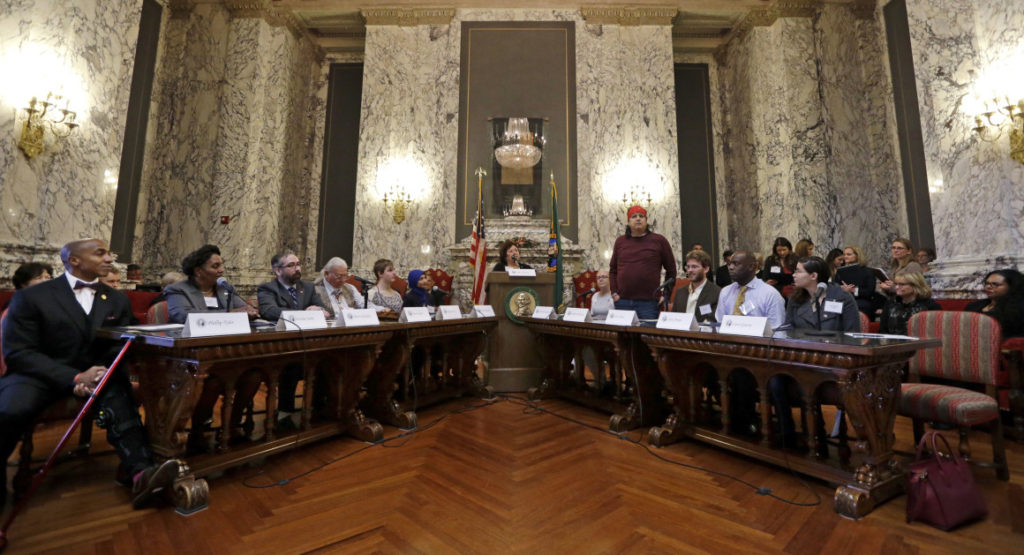
emocratic elector Robert Satiacum stands to speak during a meeting of Washington state’s Electoral College on Dec. 19, in Olympia, Wash. | AP Photo
By KYLE CHENEY
The seven so-called “faithless” votes cast by members of the Electoral College on Monday may go down as a noisy footnote to an otherwise chaotic 2016 election. But they also represent a historic breach between electors and the candidates they were expected to vote for.
The number of faithless votes has now become the most-ever cast in a single presidential election. The record was set in 1808, when six Democratic-Republican electors opposed James Madison. It’s also the first time since 1832 in which more than a single elector cast a faithless vote.
The bulk of the votes came from Washington state, where three Democratic electors bucked Hillary Clinton and cast votes for Colin Powell, a retired general, an African-American — and a Republican. These Democrats were supporting a failed effort meant to block the election of Donald Trump and unite behind an alternative Republican candidate. Powell turned out to be their choice.
A fourth Washington state elector — Robert Satiacum — cast his ballot for Native American activist Faith Spotted Eagle. And a fifth vote against Clinton came late Monday in Hawaii, where one elector voted for Bernie Sanders.
The only two anti-Trump votes occurred in Texas. One, cast by elector Chris Suprun for Ohio Gov. John Kasich, was expected. But a second, cast by an unknown elector for libertarian former Rep. Ron Paul, was a surprise.
As remarkable as the level of faithless voting turned out to be, the numbers could have been even higher. Three additional Democratic electors — one each in Maine, Minnesota and Colorado — attempted to buck Clinton as well but they were denied the chance to do so by state election officials.
Maine’s David Bright initially cast his vote for Sanders, Clinton’s primary rival. But after he was told his vote was improper, based on a state law, he changed his mind and supported Clinton. Minnesota elector Muhammad Abdurrahman also attempted to back Sanders but he was quickly replaced under a similar Minnesota law with an elector who voted for Clinton.
In Colorado, elector Micheal Baca — a leader of the anti-Trump Electoral College effort — was removed as he attempted to cast a vote for Kasich. He says he intends to fight his removal and cast the vote as he intended.
Monday marked the first time any state laws that bind electors have been enforced. Though many have been on the books for decades, electors have nearly unanimously backed their party’s candidate throughout history — when there have been single stray votes in recent history, they’ve typically gone unchallenged and unenforced.
Only 157 faithless votes have ever been recorded in total, and most came before the turn of the 20th century.
The last faithless electoral vote occurred in Minnesota in 2004, when an unknown elector cast a ballot for John Kerry’s running mate, John Edwards.
___
http://www.politico.com/story/2016/12/electoral-college-electors-232836
